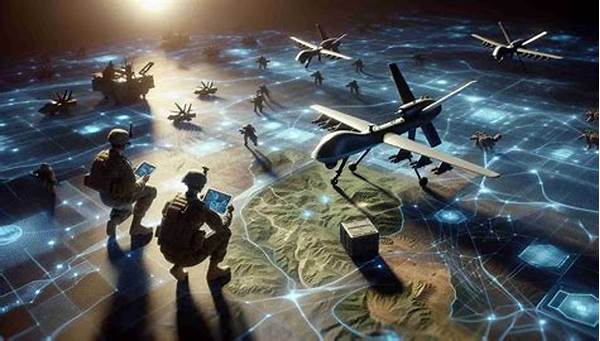Artificial Intelligence Accountability in Combat
In the age of cutting-edge technology and digital innovation, the battlefield is no longer confined to just the physical space. The advent of Artificial Intelligence (AI) has redefined the landscape, introducing new paradigms and challenges. Amid these developments, “artificial intelligence accountability in combat” emerges as a critical consideration, generating intense debates and varied opinions. Imagine a battlefield where drones, equipped with sophisticated AI algorithms, operate with autonomy. They assess threats, target enemies, and execute missions without the direct hand of a human operator. It sounds futuristic, perhaps even utopian, yet also raises a cascade of ethical and moral questions that prompt us to ask: who is responsible when machines err?
As AI systems become integral to military operations, accountability becomes paramount. Did a drone malfunction due to a programming error, or was it a consequence of unpredictable battlefield variables? Each scenario presents its complexities, demanding a reimagined framework of legal and ethical guidelines. Artificial intelligence accountability in combat is more than just a buzz phrase; it is an imperative in shaping robust military AI systems that align with human values. It’s about ensuring that these AI systems, although devoid of emotion and bias, operate within a structured ethical framework.
The Need for Robust Accountability Systems
As technological advancements integrate deeper into military contexts, AI accountability is no longer theoretical but practical. The challenge lies not only in creating AI systems that perform efficiently but also in establishing accountability structures that address issues when these systems don’t perform as expected. AI should not be an enigma, operating in the shadows with opaque decision-making processes. Instead, transparency and clarity must underpin every algorithm deployed in combat scenarios.
Delving Deeper: The Moral and Ethical Conundrums of AI in Combat
In a world where AI systems are gradually taking a frontline role in military applications, the debate surrounding artificial intelligence accountability in combat extends beyond technicalities to moral and ethical dimensions. These intelligent systems, while facilitating unprecedented military precision, also raise questions about the dilution of human moral agency in warfare. When machines make life-and-death decisions, how do we ascribe accountability?
Civilian oversight becomes a requisite mechanism in ensuring that AI applications in combat adhere to international law and ethical norms. A nuanced discourse, blending insights from engineers, ethicists, legal experts, and military strategists, is needed to navigate these complex waters. This amalgam of perspectives could proffer a matrix of checks and balances, ensuring that artificial intelligence accountability in combat remains a guiding tenet.
Balancing Efficiency and Ethics
The seductive allure of AI in combat lies in its potential for minimizing human casualties and enhancing mission success rates. However, this technologically-driven efficacy should not eclipse ethical considerations. Drones and autonomous weapons do not possess a conscience, making it imperative that humans remain at the helm of oversight. A balanced approach involves leveraging AI’s capabilities while ensuring these systems adhere to strictly defined ethical boundaries.
Summarizing Key Issues in AI Accountability in Combat
Discussions on Implementing AI Accountability in Combat
The Implementation Spectrum
Implementing artificial intelligence accountability in combat can be seen as a spectrum, involving stakeholders from various fields. It is not a path devoid of challenges; rather, it is a labyrinth navigating through ethical dilemmas, technical bottlenecks, and logistical complexities. On one hand, we have the tech evangelists, those who champion the unrestricted integration of AI in military systems. On the other, we face the humanists, advocates for ethical restraints, urging caution as technology transforms battle methodologies.
Challenges and Opportunities
The dual scenario of challenge and opportunity characterizes the advent of AI in combat. Accountability extends beyond mere fault-finding post an AI mishap. It is about preemptive design, where accountability is embedded in the very DNA of AI systems. This calls for collaboration across borders, not just among military institutions but involving international regulatory bodies, ensuring combat AI adheres to universally acceptable norms.
Policymaking and Regulation
Policymaking is the linchpin in ensuring artificial intelligence accountability in combat. Governments and international bodies must articulate clear regulations guiding the deployment and use of AI in military operations. Incorporating AI requires not just design and technological input, but also rigorous policy frameworks that delineate operation boundaries and ethical guidelines, ensuring AI is a tool that enhances humanity rather than diminishing it.
Artistic Illustrations of AI Accountability in Combat
In navigating these complex waters, discussions, art, and policy reform all play an interdependent role, threading together a fabric where artificial intelligence accountability in combat is not just a principle but a lived reality. Balancing innovation with ethics, these narratives ensure that while AI might drive the future of military engagements, it does so with a conscience, reflective of the values we hold dear as a society.

